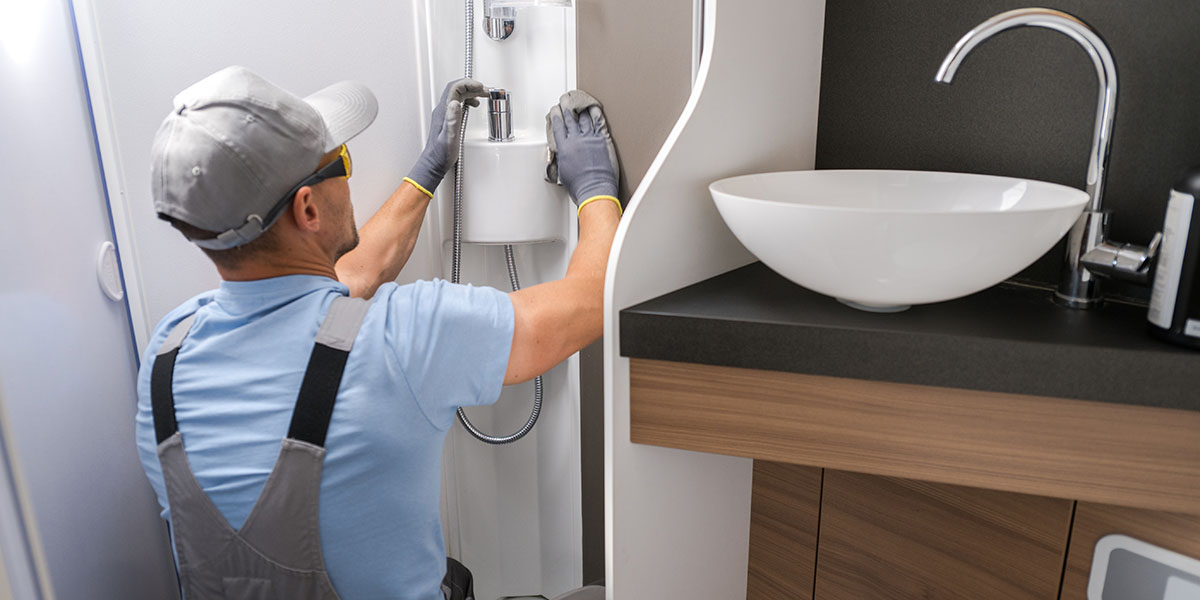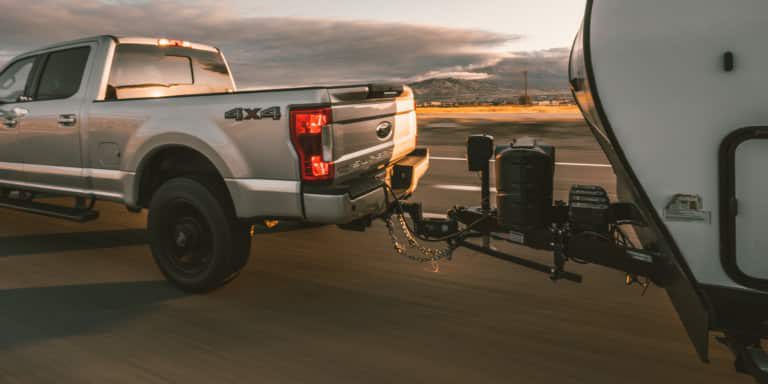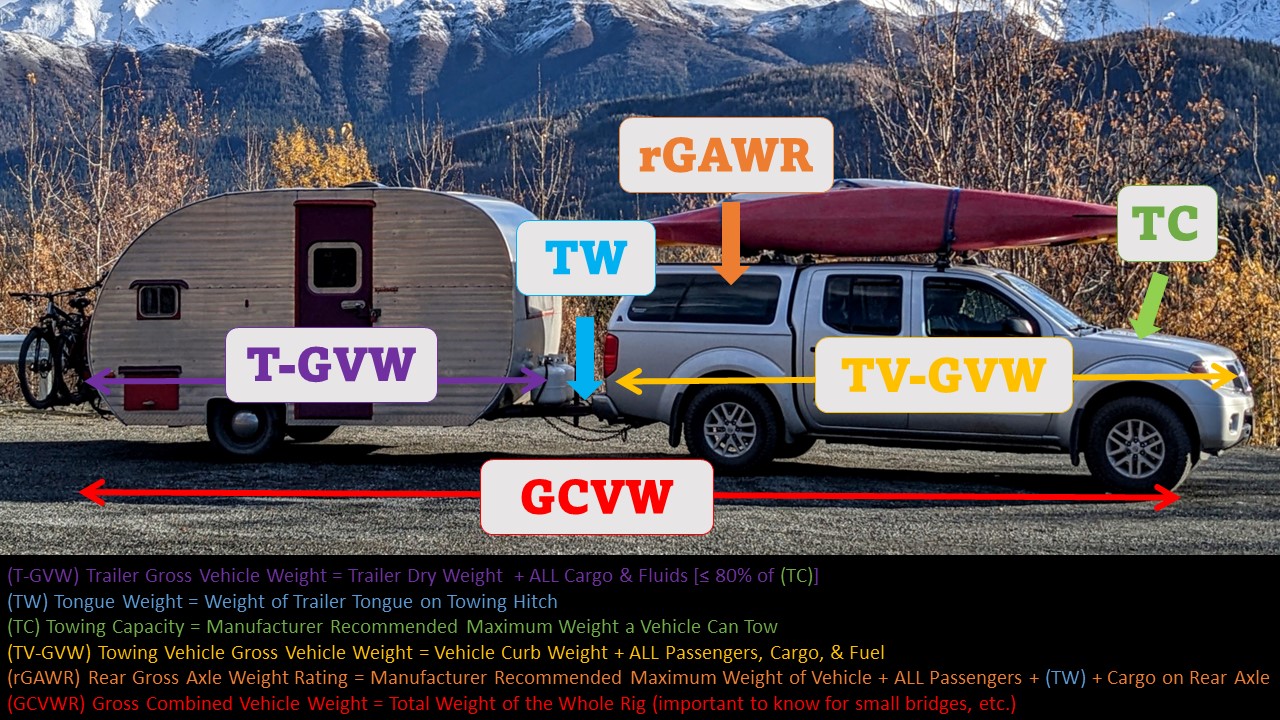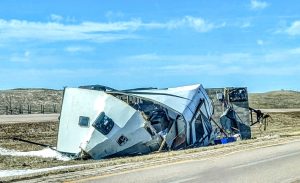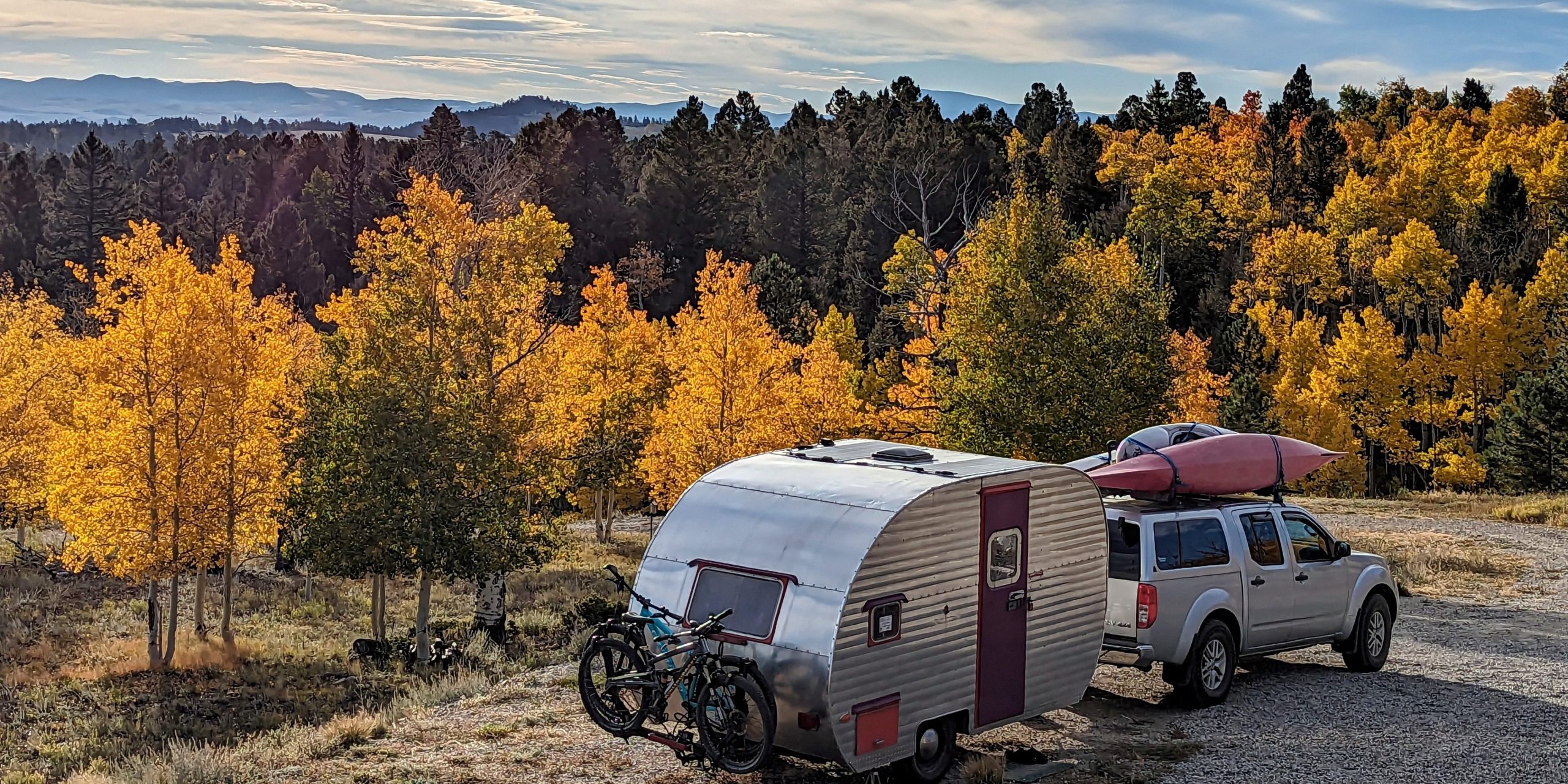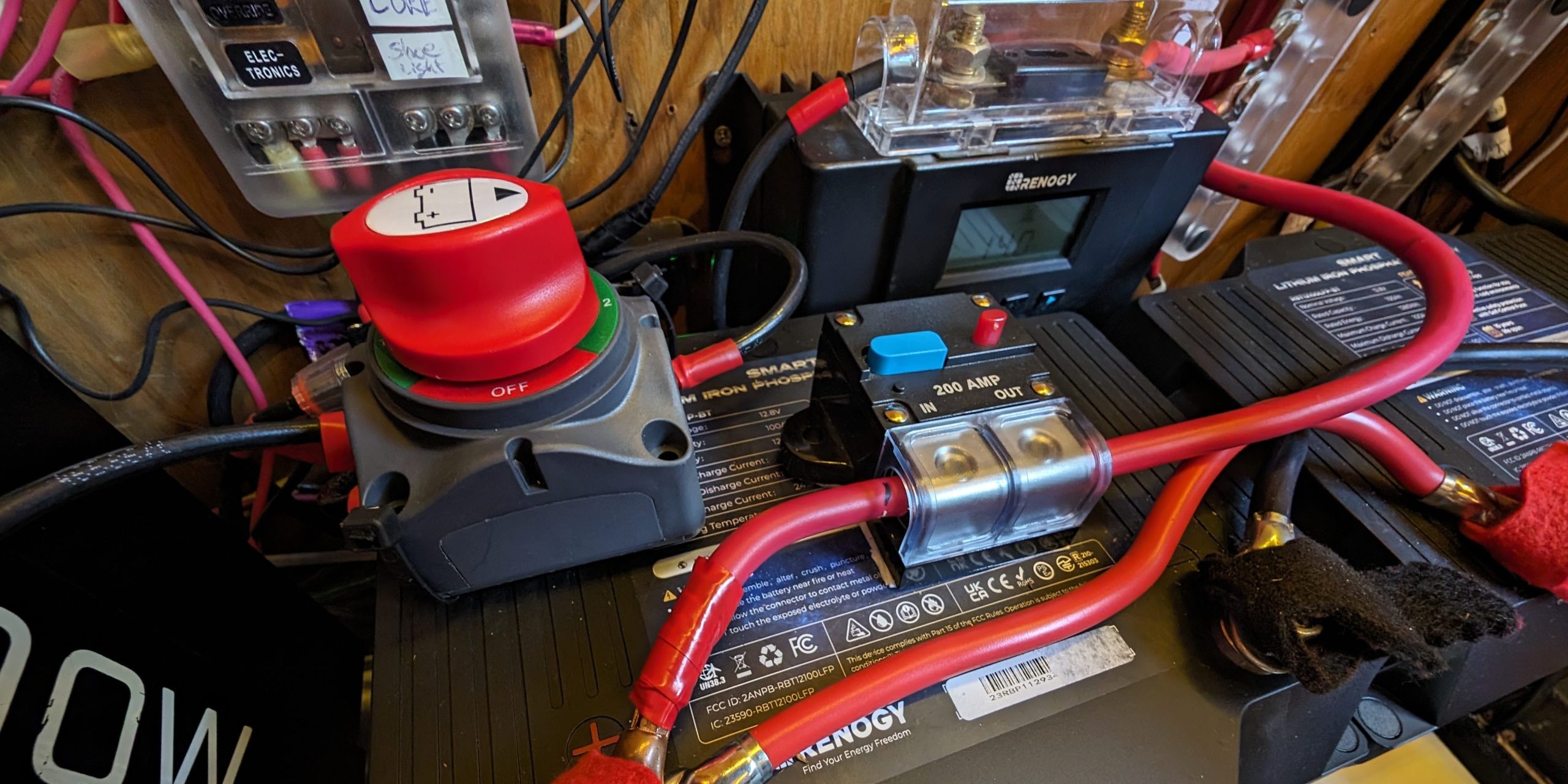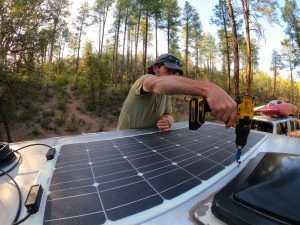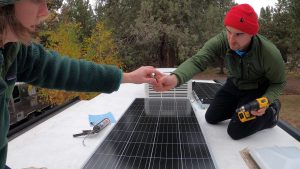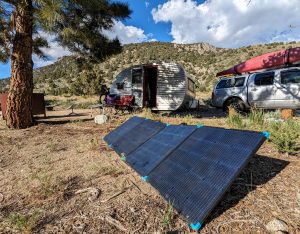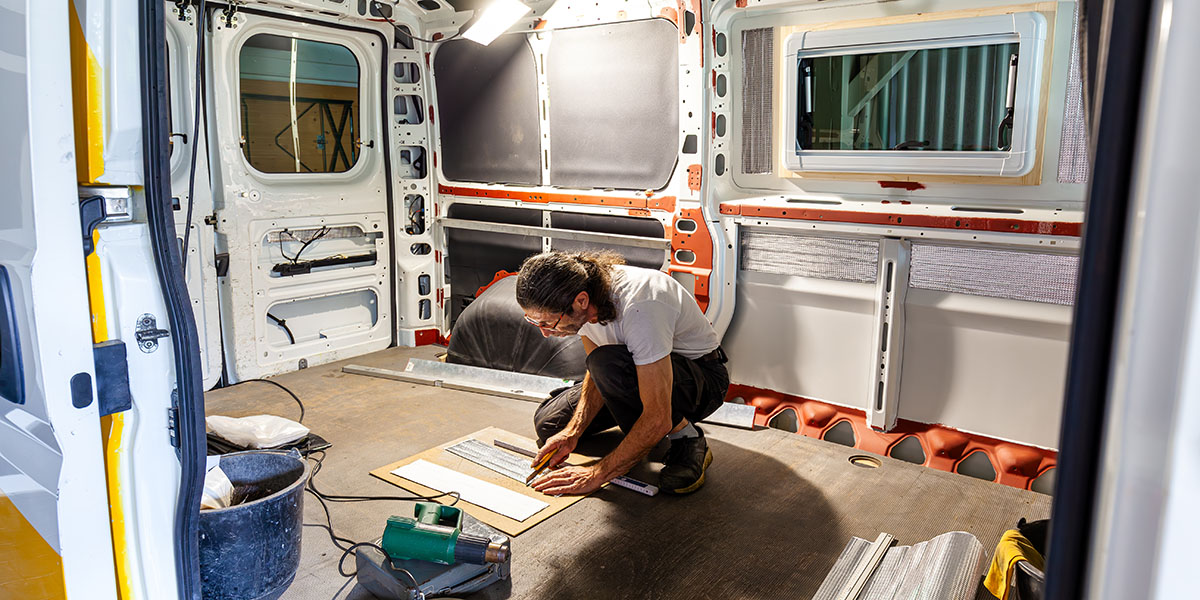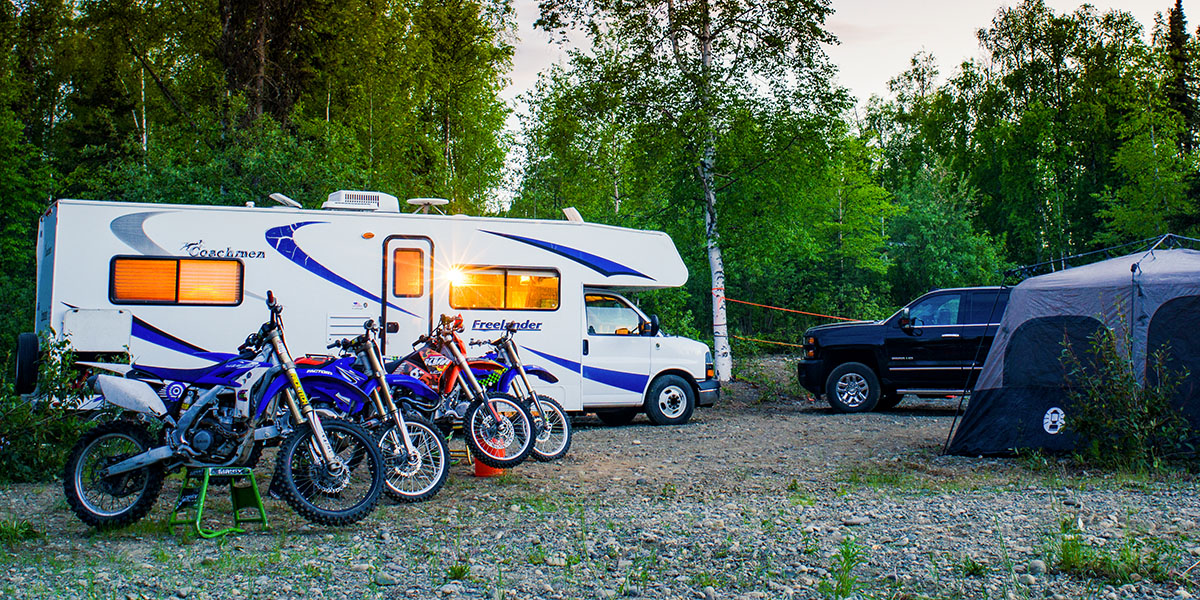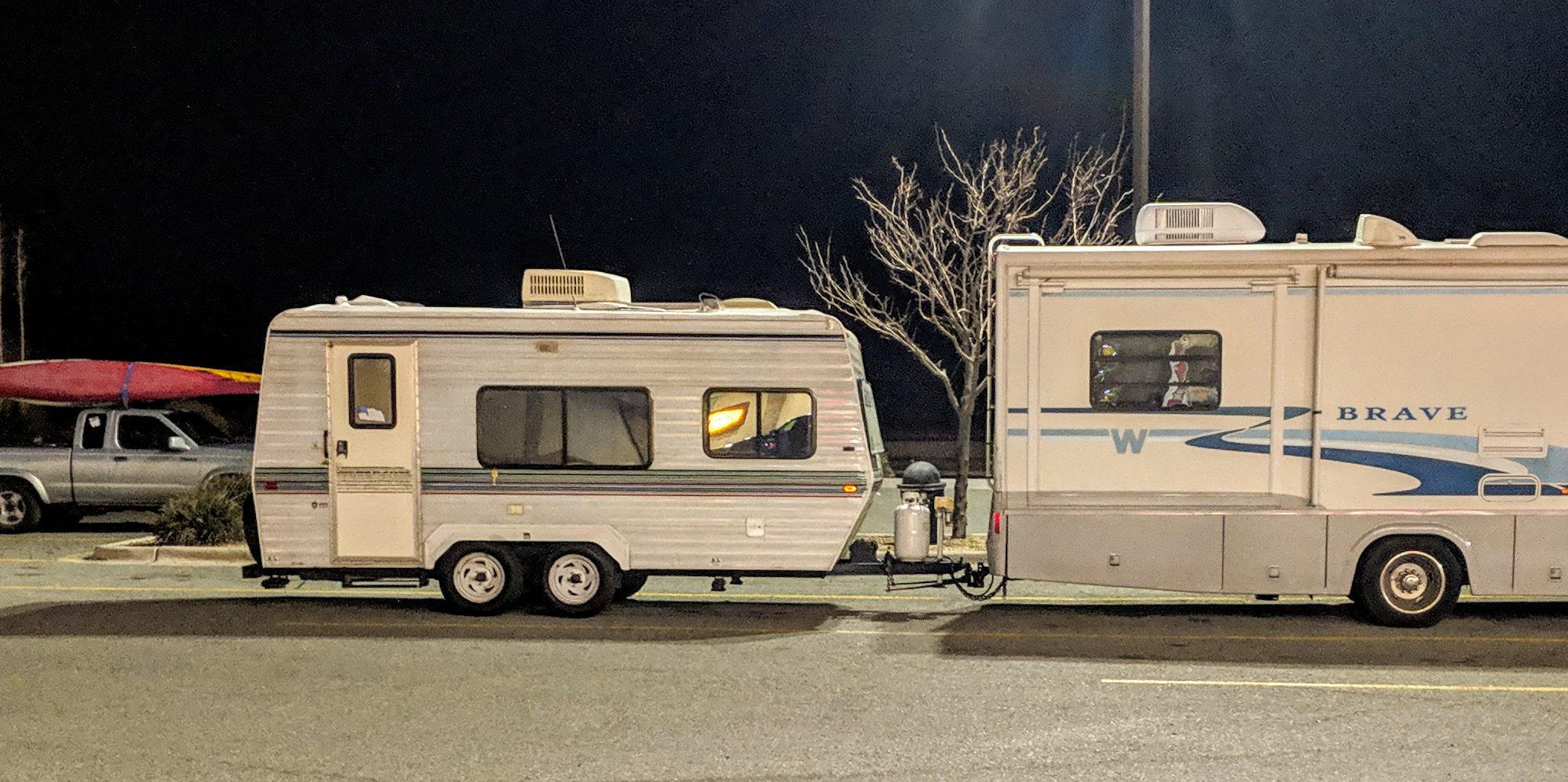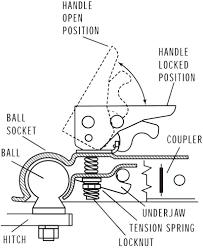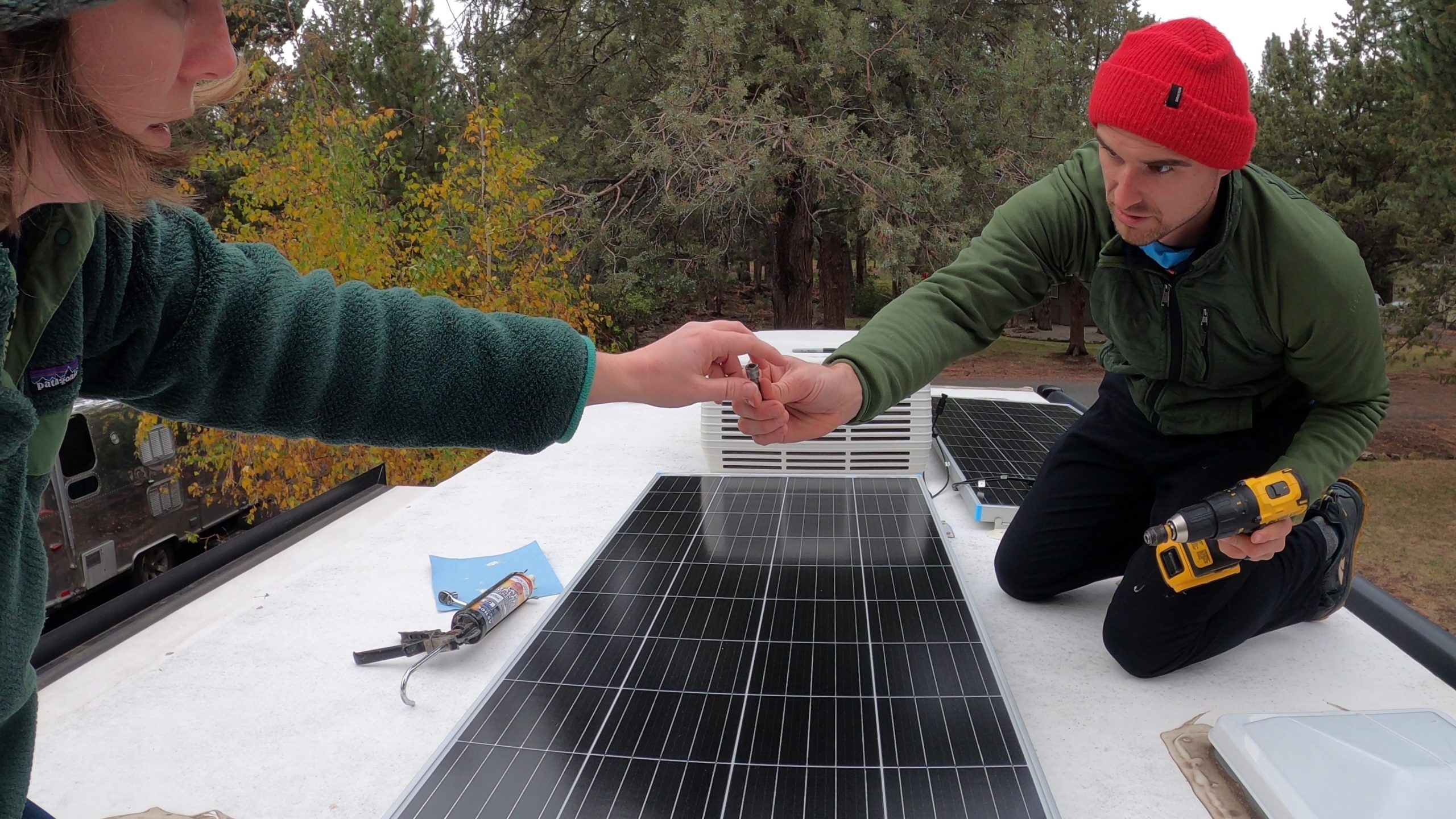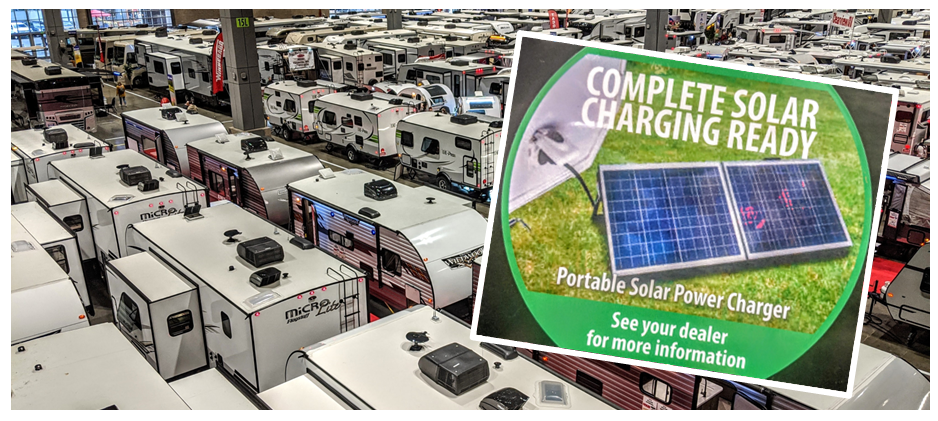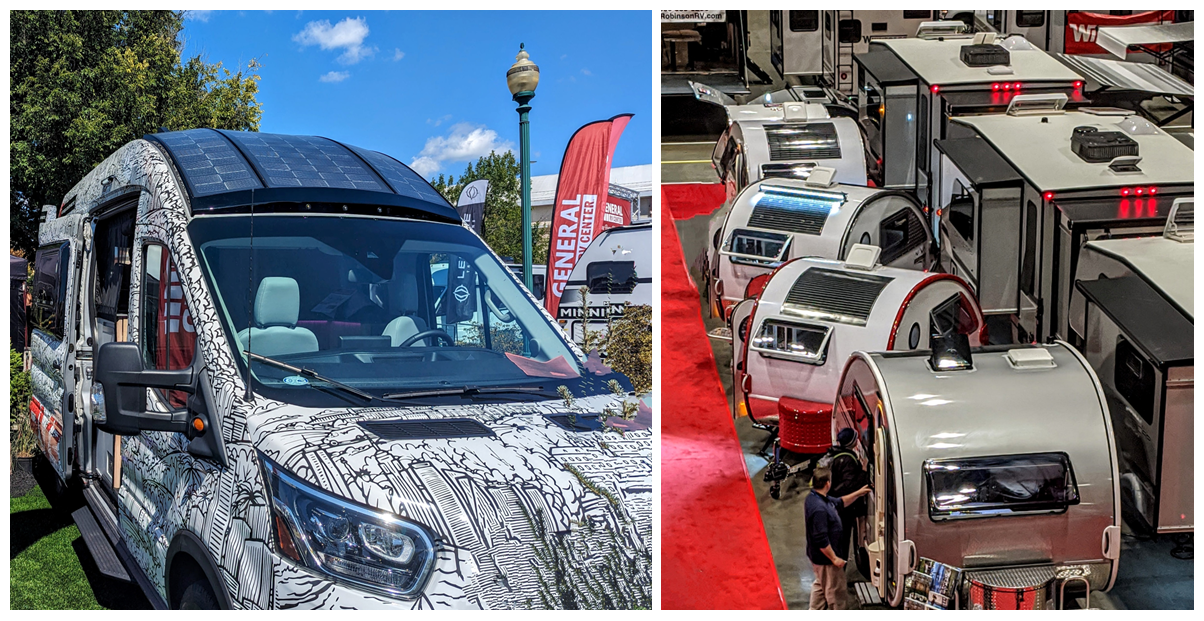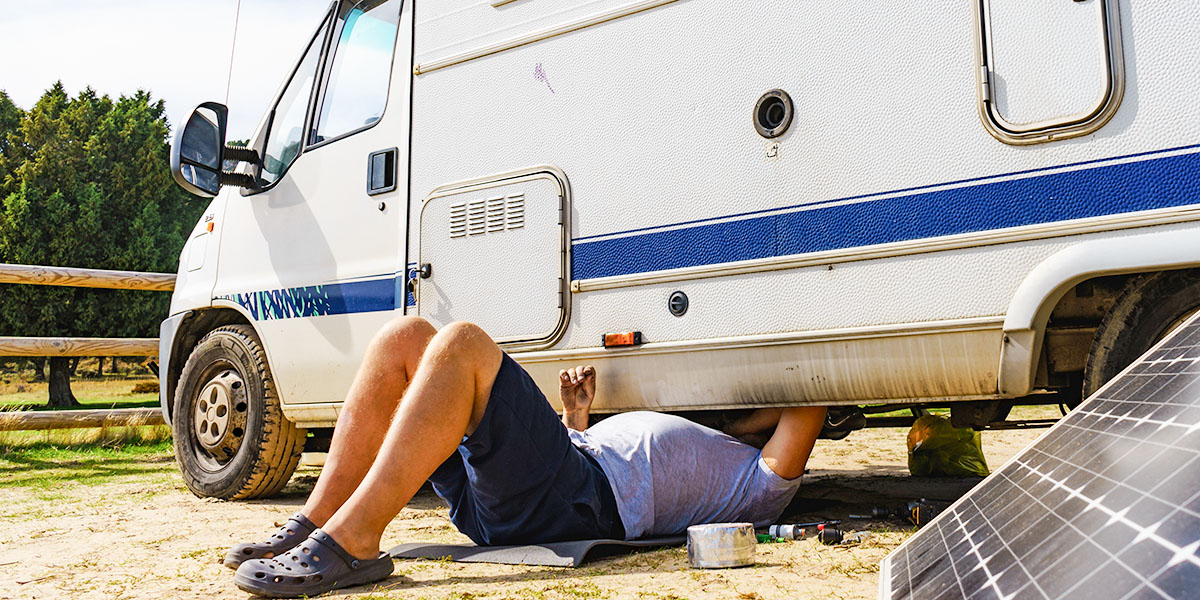RV life on the road is a proverbial roller coaster. One minute you’re enjoying a cup of morning coffee with a view of the crystal-clear waters of the Florida Keys. And the next minute? You’re drying the floor with beach towels, wondering where in the world the water is coming from. Sounds far-fetched, but that’s what happened in my first RV. Even with a major RV water damage scare like that, my love for this life is still as strong as ever. My wife and I are now well into year six of RV life, and we are on our fourth rig.
For most situations, we have found that with some know-how and a bit of elbow grease, you can tackle many of these problems head-on and keep your RV in tip-top shape. But we have also realized that in some cases, getting a professional is the best option for the job.
What can you do yourself, and how do you tell when it’s time to call for help? Here’s a guide to dealing with mold and water damage in your RV.
Recognizing the Signs of Water Damage
First comes water. Then comes damage. Then comes mold throughout the RV carriage. If you went back and sang that like I did, then you are my kind of people. In all seriousness though, that is the essential order for this process, so we start with the water.
Water damage can sneak up on you if you’re not paying close attention. What starts as a small leak can quickly turn into a bigger problem, especially if it goes unnoticed. Here are some common signs:
Common Signs of RV Water Damage
- Discoloration or Stains: Water stains on the ceiling, walls, or floors are often the first indicators of a leak. If you notice dark or discolored patches, it’s time to investigate.
- Soft Spots: Walk around your RV and press on the walls, floor, and ceiling. If you find any soft or spongy areas, this could indicate water damage beneath the surface.
- Musty Odor: Mold loves damp, dark spaces. If you detect a musty smell, it’s a strong sign that there’s moisture trapped somewhere, and mold could already be taking hold.
- Peeling Wallpaper or Paint: Water can cause adhesives to break down, leading to peeling wallpaper or bubbling paint. If you see these signs, there’s likely moisture behind the scenes.
- Warped or Buckled Materials: Wood or laminate flooring that is buckling, or walls that appear warped, are telltale signs that water has been pooling somewhere it shouldn’t.
Steps to Address RV Water Damage
Once you’ve identified the signs of water damage, it’s crucial to act quickly to prevent further issues, including the growth of mold. And trust me when I say they usually aren’t as easy to spot as a beach towel’s worth of water on the floor.
Step 1: Find and Stop the Source of the Leak
Before you can begin repairing the damage, you need to stop more water from entering your RV. This could be from any number of sources or weak spots, but three of the more common culprits are a leaking roof, windows, or even plumbing. Inspect the areas where you noticed damage and trace the water back to its source.
In our beach towel situation, we couldn’t find the leak at all, and that’s when we cut our losses and took it to the professionals. We were lucky enough to have the RV under warranty and they were eventually able to work on it. In our third RV we had a smaller leak from the window and all it needed was a bigger, thicker, seal around the window frame.
Tip: Don’t forget to check around slide-outs, vents, and any other areas where the RV’s exterior is interrupted by seams or openings. These spots are notorious for letting water in.
Step 2: Dry Out the Affected Area
Once you’ve stopped the leak, your next step is to dry out the affected area as thoroughly as possible. Mold can begin to grow in as little as 24 to 48 hours, so time is of the essence.
Tip: Use fans, a dehumidifier, and open windows and doors to get as much airflow as possible. If the weather is dry, this can be incredibly effective. If you have a chance to get to the west, where the climate is much drier, it can be a huge help. For more severe cases, you may need to use a wet/dry vacuum to remove standing water.
Step 3: Remove Damaged Materials
Water damage can weaken materials like wood, insulation, and even drywall. If any part of your RV shows signs of rot, warping, or mold, it’s essential to remove and replace these materials.
Tip: Be thorough in your inspection and removal. Mold can spread quickly, and if any affected material is left behind, the problem could return. Use mold-resistant replacement material where possible to prevent future issues.
Dealing with Mold: A Step-by-Step Guide
While we were lucky with the mold situation in our RV. it was under warranty and was taken care of by professionals – I’ve had to deal with mold in buildings, and let me tell you, it is not a fun or healthy experience. So, if you discover mold in your RV, it’s important to handle it carefully to avoid spreading spores and worsening the problem.
Step 1: Wear Protective Gear
Mold can be harmful to your health, so before you begin, make sure you’re wearing gloves, a mask, and protective eyewear. This will help prevent inhalation of mold spores and skin contact. If you are like me and mold can have a truly negative experience on your health or breathing, then I highly suggest hiring a professional to work on the situation.
Your health is always worth more than trying to save a few bucks with a DIY!
Step 2: Isolate the Area
If you are moving forward with a DIY, then the first step after putting on all your protective gear, is to try and seal off the area where the mold is located. Remember to close doors, cover vents, and tape plastic sheeting over doorways to contain any spores that might get kicked up during cleaning. This way the spores don’t spread to other parts of the RV.
Step 3: Clean the Mold
Sometimes a mixture of water and detergent as well as a commercial mold cleaner to scrub the affected area can go a long way. Another option to try is a solution of water and bleach (1 cup of bleach to 1 gallon of water) — but be sure to ventilate the area well.
Tip: Avoid using bleach on porous surfaces like wood or drywall, as it doesn’t always penetrate deeply enough to kill all the mold. For these situations, try using a cleaner specifically designed for these materials.
Step 4: Prevent Future Mold Growth
Once the mold is cleaned, take steps to prevent it from returning. Ensure the area is thoroughly dried and consider applying a mold-resistant coating to surfaces prone to moisture. Regularly inspect your RV for any signs of new leaks or dampness and address these issues immediately.
Restoring or Replacing Damaged Materials: Bringing Your RV Back to Life
After tackling water damage and mold, the next step is to restore or replace the affected areas to get your RV back in shape. This can seem overwhelming, but breaking it down into manageable steps makes it doable.
- Assess and Remove Damaged Materials: Start by thoroughly inspecting your RV to determine what needs to go — soft spots in the floor, warped walls, or swollen cabinetry. Carefully remove any damaged materials, being sure to cut away all affected areas to prevent future issues.
- Replace Subfloor and Wall Structures: If the subfloor or wall framing is compromised, replace these with new materials. Use sturdy plywood for subfloors and fresh wood for framing, ensuring everything is level and secure. Don’t forget to replace any damaged insulation with a mold-resistant option.
- Rebuild and Refinish: Once the structural repairs are complete, rebuild and refinish your RV’s interior:
• Walls: Install new wall panels, seal seams, and add a fresh coat of paint or wallpaper.
• Flooring: Lay down new vinyl, laminate, or carpet, leaving room for expansion and finishing with trim.
• Cabinetry: Refinish or replace cabinets, making sure they’re securely installed. - Final Touches: Finish by adding trim, painting, and decorating to make your RV feel like home again. With some effort, your RV will be ready for more adventures, looking and feeling as good as new
Staying Ahead of RV Water Damage
Dealing with water damage and mold in an RV is no fun, but with regular inspections and quick action, you can stay ahead of these issues. My wife and I have learned from experience that catching a leak early can save you a lot of headaches (and money) down the road. By following these steps and keeping a close eye on your RV, you can keep your home on wheels in great shape and focus on enjoying the adventures that lie ahead. Safe travels!
